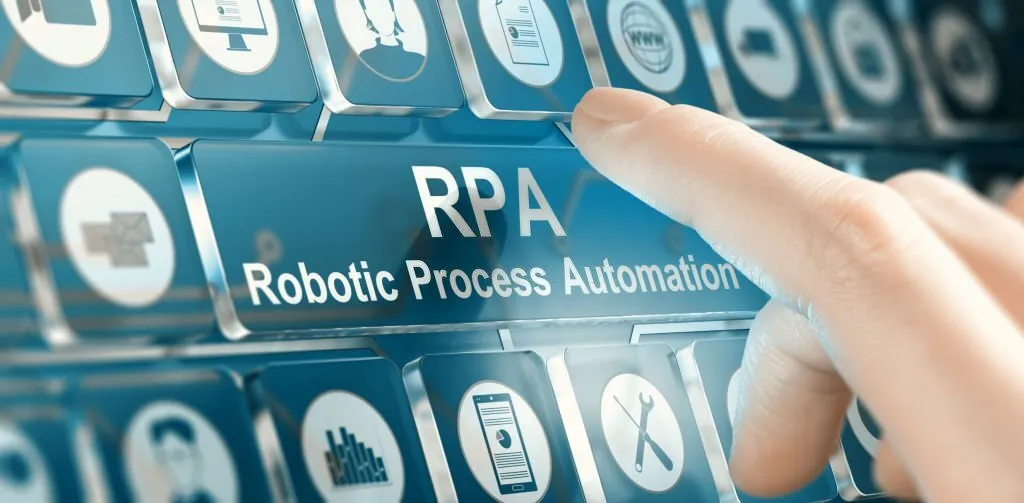

The COVID-19 pandemic has affected many aspects of how we do business, but it didn’t diminish the impact of artificial intelligence on our daily lives. As a result, it is becoming noticeable that selling teaching algorithms and intelligent machines will play a major role in the ongoing battle against this pandemic and others that we might face in the future.
There isn’t any doubt that AI industry trends remain in technology and innovations that will fundamentally change how we live, work, and play shortly. Artificial intelligence will proceed to serve as a central technological innovation and the upcoming future. In the next decade, rapid growth and recognition of current and new technologies can be unparalleled. So here is an overview of the latest trends in AI in the years to come:
Below are the latest AI trends:
More CIOs are turning towards an evolving technology known as robotic process automation for streamlining business processes and reducing costs. For example, with RPA, organizations could automate rule-based tedious business processes by allowing their workforce to devote more time to serving clients and other higher-value work.
RPA targets the basis of business processes that drive ordered business logic and inputs. RPA solutions could range from something as easy as producing an automated mail response to deploying millions of bots. RPA will program each bot in an ERP system for automating rule-based tasks. RPA is now used in a variety of industries, including construction, call centers, human resources, and banking.

AI-powered chatbots, also known as conversational AI, enhance customer experience reach, personalization, and responsiveness. In research by Forrester, Businesses could use conversational AI solutions to transform customer service better. To better understand what humans say and need, an AI-powered chatbot could use natural AI and machine learning trends to provide a more natural and near-human-level interaction.
Big data is one of the latest trends in AI that is being extensively used for identifying COVID-19 patients and critical hot points. AI is serving the healthcare sector to a great degree with the highest accuracy possible. Additional researchers have developed thermal cameras and mobile applications to monitor individual temperatures and collect data for healthcare organizations.
By leveraging data analysis and predicting various outcomes, AI could support healthcare facilities in various ways. For example, AI and machine learning trends offer human health insights and recommend preventive steps for avoiding diseases. AI industry trends also Anchorage doctors to remotely track their patients’ health, thereby advancing teleconsultation and remote care.
There is a growing requirement for Ethical AI for everyone, and it is at the top of the list of emerging developments in technology. The coming decade will need CIOs to respond to digital acceleration and proactively handle risk and business continuity with the ethical use of artificial intelligence.
Value-based customers and workers expect businesses to implement their responsibility by looking at how trends are rapidly changing. As a result, companies will be actively choosing to do business with partners committed to data ethics for the next few years.
Knowledge will continue to grow and become extra accessible. Digital data will be at a more elevated risk of being endangered and exposed to hacking and phishing attacks in the upcoming years. Emerging technology will present security departments with support in every area against malicious activities.
It will also help in data mining cyber crimes in the future with improved cybersecurity measures. The AI-enabled framework will be able to detect fake digital activity or transactions that match criminal trends.
The lines between AI and IoT are becoming increasingly blurred. Although both technologies have distinct features they have larger and more unique possibilities when adjoined. We have intelligent voice assistants like Alexa and Siri, thanks to the convergence of IoT and AI for everyone. IoT solutions become more intelligent thanks to AI’s ability to gain insights from data quickly.
NLP is currently one of the most recent trends in AI applications. The growing popularity of NLP can be attributed to its widespread use by Amazon Alexa and Google Home. In addition, NLP has removed the need for writing or interacting through a screen because humans can now interact with robots who understand their language. The use of natural language processing (NLP) in sentiment analysis, machine translation, process definition, auto-video caption generation, and chatbots is expected to grow.
Reinforced learning (RL) is a form of deep learning that improves data quality and efficacy through learning from previous experiences. Some use cases of RL are robotics in preparing business strategies, optimizing advertisement content, automating industries, controlling aircraft, and making motion control robots.
Advanced industries will continue using quantum dominance to test Qubits for use in supercomputers. Quantum computers solve problems faster than traditional computers because of quantum bits. They also aid in the analysis of data and the forecasting of many distinct patterns. Quantum computers can assist a variety of organizations in identifying inaccessible problems and predicting viable alternatives. Future machines will also support a wide range of artificial intelligence applications in areas such as nursing, economics, and chemistry.
E-solutions assist in redefining business processing using real-time alerts. Researchers have period hyper-automation with cognitive automation for deeply understanding the requirements of the market. Content Intelligent technologies, along with supportive practices, will be assisting digital workers in developing outstanding abilities. Such skills could help them cope with the automation of natural language, judgment, contact formation, reasoning, and data-related insights.
We can look forward to seeing how many of these latest trends in AI move out and what innovations they will be bringing to the table in the coming years. AI’s spectrum is vast and varies from one organization to another. Therefore, organizations should stay updated with emerging trends and find ways to leverage AI-powered solutions to scale new heights.